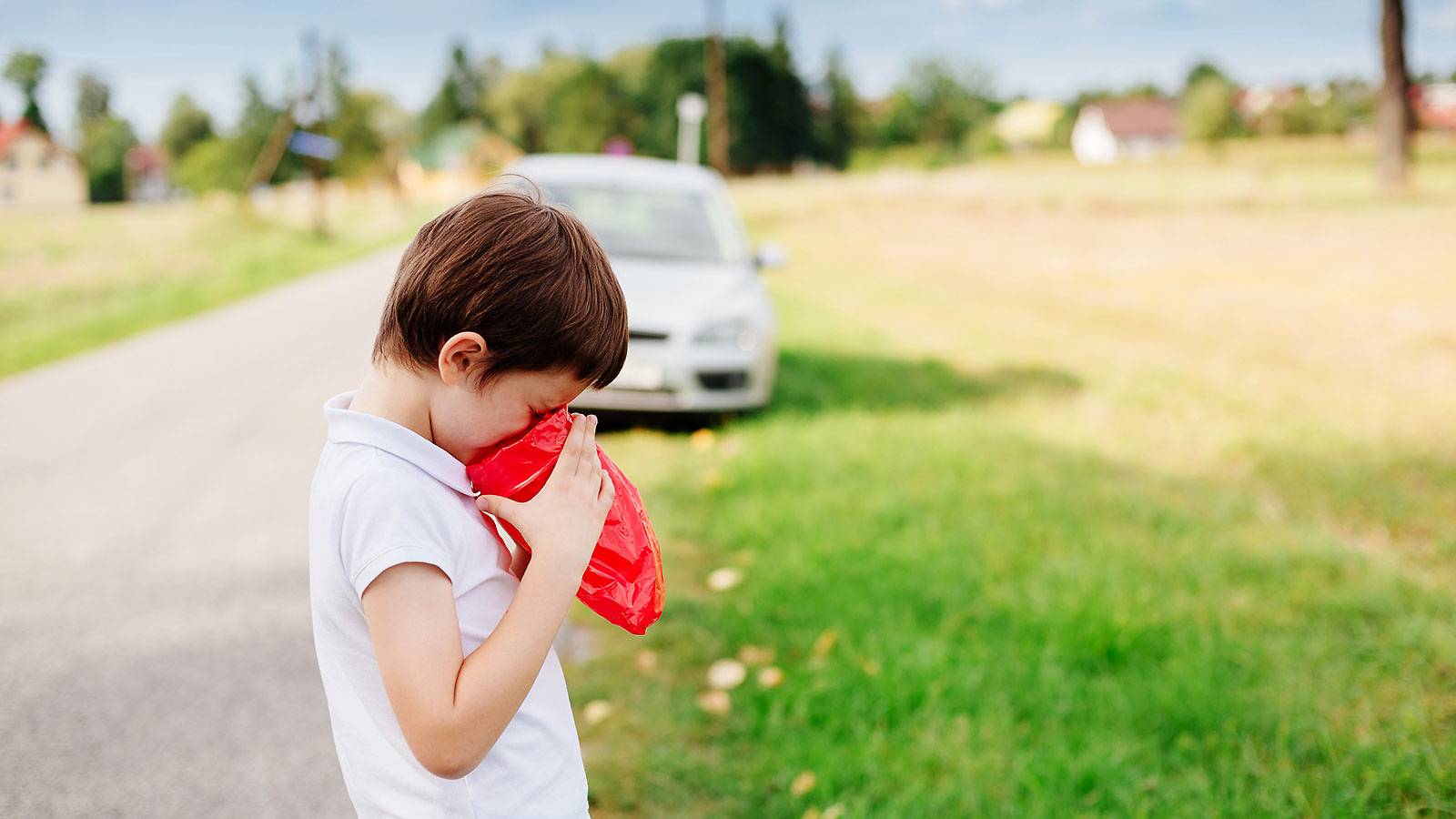If junior turns green in anything that moves, we have solutions that should keep their nausea at bay.
![Toddlers-[SPB-#3-p38-Rep'd]-9-ways-to-prevent-motion-sickness-in-your-child-MAIN](/sites/default/files/image_resources/image-9958992-f795835db59c018b3abca4e24f077634-toddlers--spb--3-p38-rep-d--9-ways-to-prevent-motion-sickness-in-your-child-main.jpg)
If car trips and travelling on a bus, boat and airplane makes your child unwell, you’ll know how miserable travel is with a vomiting kid.
Motion sickness is a common condition that afflicts some children when they travel in a car, train, airplane or boat. While the problem doesn’t seem to affect most infants and toddlers, children ages 2 to 12 seem particularly vulnerable to motion sickness.
The problem arises when your kiddo’s inner ear tells their brain that they are moving, but their eyes send signals that they are sitting still. This confuses their mind and body, which gives rise to nausea and vomiting. It starts as a feeling of uneasiness, followed by sweating and giddiness, ending in nausea and vomiting.
Your kiddo’s inner ear tells their brain that they are moving, but their eyes send signals that they are sitting still. This confuses their mind and body, which gives rise to nausea and vomiting.
Do avoid giving your child any dairy before or during the journey, which may aggravate nausea in some people. It’s best to keep them hydrated with plain water.
You’ll also need to teach your child to recognise the signs of motion sickness and inform you as soon as he or she starts to feel unwell. This will prevent mess and inconvenience. Just in case, always bring along leak-proof plastic bags, wet wipes and a change of clothing.
We list nine ways to help your child cope with motion sickness.
1. Eat carefully
Keep pre-trip meals light and non-greasy, ensure they have time to digest before travelling. If the trip is long or your tot is hungry, offer light snacks like saltine crackers along the way.
2. Put down the video game…
… Add books, movies and colouring pages to this list. Reading, playing with electronic devices or watching movies may worsen his or her condition. Remember the theory that riding in vehicles delivers mixed signals to your tyke’s inner ear and confuses the senses? This is what triggers the dizziness and nausea of motion sickness.
3. Offer distractions
Listening to music, singing songs, playing car games or chatting may calm your child and take his or her mind off the feelings of nausea.
![Toddlers-[SPB-#3-p38-Rep'd]-9-ways-to-prevent-motion-sickness-in-your-child-2](/sites/default/files/image_resources/toddlers--spb--3-p38-rep-d--9-ways-to-prevent-motion-sickness-in-your-child-2.jpg)
4. Sit strategically
If possible, choose a seat in the middle of the vehicle as that’s where your child will experience the least movement. On trains, choose the forward-facing seats, and on the bus, boat or plane, pick the window seats in the middle rows whenever possible. Avoid seats in the rear as passengers will experience the greatest turbulence.
5. Reduce stimulation/sensory input
Strong or bad smells may trigger nausea in a child who is prone to motion sickness. So, try to keep the air free of strong odours or replace the pong with something more pleasant, like peppermint, which eases nausea.
Also, encourage your child to look at a stable object or focus on an object in the distance, such as the horizon or a mountain. Taking a nap works wonders, so, try to plan the journey around naptime or encourage your tot to relax and take a nap.
Be patient with your child, who is feeling miserable. Don’t nag or harp at him as it’ll only add to the negative stimuli.
6. Try natural treatments
Some people find acupressure wrist bands effective, while others swear by medicated oils or aromatherapy. Always read the instructions carefully and ensure that they are child-safe before use. Offer your child a sweet to suck on but avoid overly sour or acidic ones.
7. Ventilate, ventilate, ventilate
Whenever possible, ensure that cool air is circulating as adequate ventilation may
help ward off motion sickness. Fan your child or, if possible, open the window slightly, or go out for some fresh air.
8. Keep still
Minimise physical activity while travelling, which means no running, jumping, walking or running down the aisles as these might trigger nausea. Encourage your tot to sit facing forward quietly in their seat, with their head on the head rest or a neck pillow.
9. Give medication
Ask your child’s doctor for medication that can prevent motion sickness and nausea. However, some of these meds may cause drowsiness.
Night-time may be the best time to travel if you suffer from motion sickness. When it is pitch black and there’s less visual stimuli for the brain, your body is less likely to produce motion sickness symptoms.
Be patient with your child, who is feeling miserable. Don’t nag or harp at him as it’ll only add to the negative stimuli. Always stand by a plastic bag with wet wipes and a change of clothing, in case your tot decides to let it go, despite your best efforts!
Photos: iStock
Like us on Facebook and check SmartParents regularly for the latest reads!
In case you missed these stories…
10 phrases to tell your kid instead of “Stop crying!”
